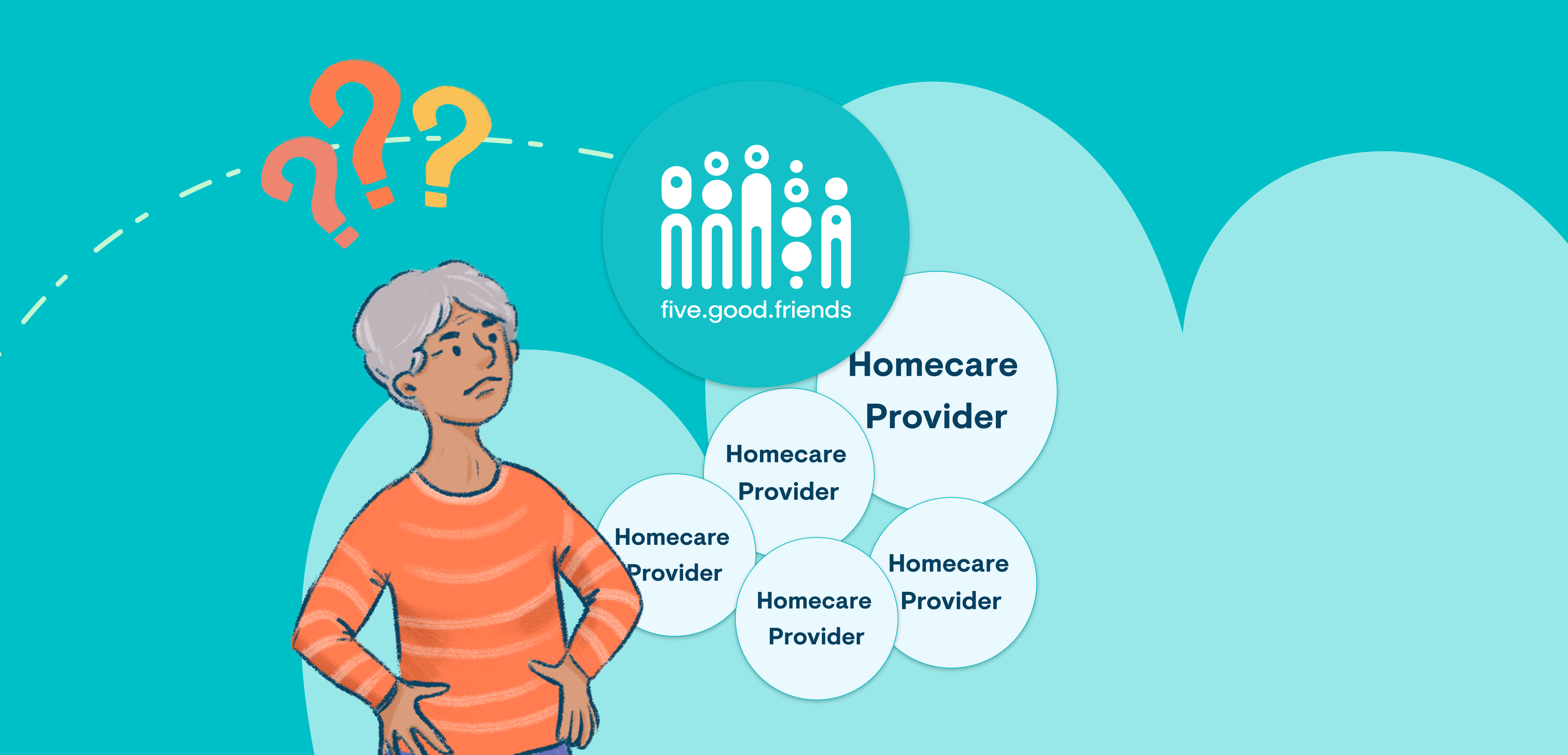If you want to stay in your own home as you age, you’re not alone. Most Australians prefer to age in place — and with the Support at Home program, you can receive the help you need to live safely and independently at home.
What is a home care provider?
A home care provider (also known as a Support at Home provider) is an approved organisation that delivers aged care services to older Australians so they can remain in their own homes. These providers coordinate and deliver Support at Home services, such as:
- Personal care (showering, dressing, toileting)
- Domestic assistance (cleaning, laundry, gardening)
- Clinical and nursing care (medication management, wound care)
- Allied health services (physiotherapy, podiatry, occupational therapy)
- Social support and transport
Providers, such as Five Good Friends, may offer both full service and self-managed options, allowing flexibility in how involved you want to be in organising your care.
Step 1: Identify what you need from your provider
Before comparing home care providers, start with your needs assessment through My Aged Care. Based on your Support at Home funding classification, your services may include:
- Clinical supports (e.g. nursing, allied health)
- Independence services (e.g. personal care, social support, transport)
- Everyday living services (e.g. domestic assistance, meal prep)
Make a checklist of the essential services you require and your preferences. Do you need carers who speak your language or understand your cultural background? Would you prefer a provider offering flexibility for self-management?
Knowing what matters most helps you evaluate Support at Home providers effectively.
Step 2: Compare home care providers
To find the best fit for your circumstances, you can use the My Aged Care comparison tool to view providers by location and fees and create your own comparison table with the following criteria:
- Service types and specialisations
- Languages and cultural support
- Quality ratings and reviews
- Compliance with Aged Care Quality Standards
Check for non-compliance notices or sanctions using the Aged Care Quality and Safety Commission’s compliance checker before making a decision.
Step 3: Ask the right Support at Home provider questions
Once you've shortlisted home care providers, set up meetings to ask important questions. Use video calls, phone chats, or in-person visits. Consider bringing a family member or carer for support.
Ask each provider key questions, such as:
- Will I have a dedicated team I can speak with, as required?
- Can I choose or change my carers?
- How do you match carers to clients?
- Will I have the same support workers each visit?
- Do you provide free training so care workers can upskill as my care needs evolve?
- How are complaints and feedback handled?
- What happens if I’m unhappy with my carer?
- How often will my care plan be reviewed?
- Do you have a shared family app so my loved ones can have oversight of my care?
- What are your service prices?
- Can I view a breakdown of my budget and unspent funds?
- How are you different from other service providers?
- Do you offer private and government-funded services?
- Do you offer self-managed and fully managed services? What is the difference?
- Are you currently under any sanctions or non-compliance notices?
These questions help ensure your chosen provider meets government standards, communicates clearly, and offers transparent pricing.
Step 4: Make your choice and understand your agreement
You will be in regular contact with your home care Package provider, so it’s important that they make you feel comfortable and supported at all times throughout your journey.
Once the government has approved you for home care funding, you can officially choose your provider and receive your home care agreement. This legal document will explain what funds are available for your use and will break down the government’s contribution and any participant contributions that may apply.
It's essential to ensure you fully understand this agreement before signing it. If you need some help, you can speak to a loved one or find an independent advocate through the National Aged Care Advocacy Program.
Step 5: Review and adjust over time
Your needs may change — and under Support at Home, you can request a care plan review at any time. Providers like Five Good Friends will work collaboratively with you to adapt services, funding allocation, or carers as your situation evolves.
Need help choosing a home care provider?
Interested in learning more about home care? At Five Good Friends, we empower people to maintain a quality lifestyle on their terms. Book a consult and learn how we can help you navigate your options and take the stress out of managing your day-to-day care.






